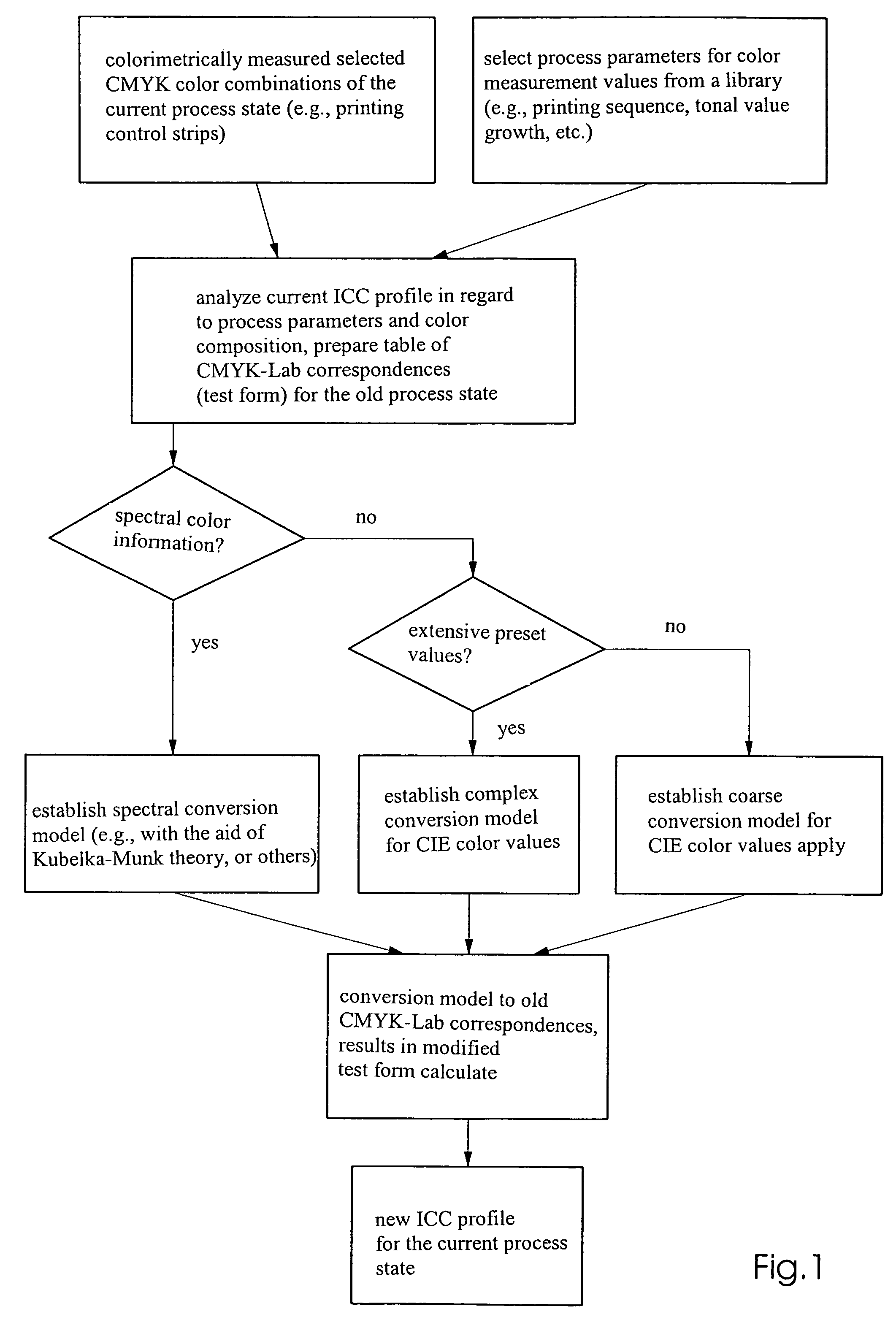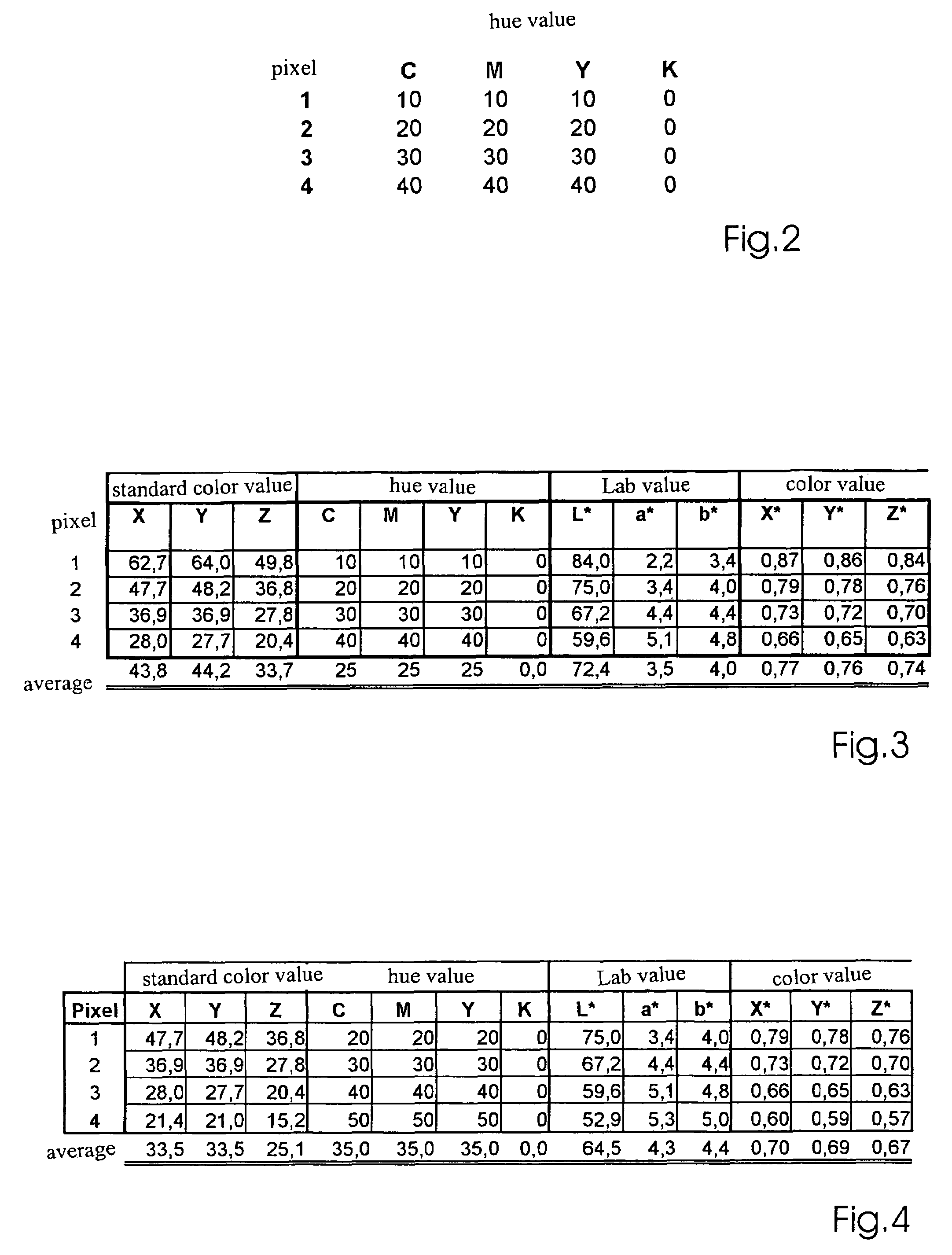Method for correcting unadjusted printing data on the basis of colormetrically measured reference sheet
a colormetric and reference sheet technology, applied in the field of digitized image file correction, can solve the problems of not being able to use image files in the device-dependent color space directly, image data generated may not always be reconstructed, etc., and achieve the effect of avoiding unnecessary waste of sample prints
- Summary
- Abstract
- Description
- Claims
- Application Information
AI Technical Summary
Benefits of technology
Problems solved by technology
Method used
Image
Examples
Embodiment Construction
[0026]To print image data on a printing press, CMYK files are provided by a client together with a reference sheet, which is to be as similar as possible to the sheets to be printed. CMYK is the abbreviation for the English-language names of the printing inks cyan, magenta, yellow, and key, the color black usually being used as key. The reference sheet may originate from an earlier version, for example, or it may be a proof print (test print), which was simulated using a completely different printing process. There is normally no device-independent information in the CMYK image data, such as Lab image data, ICC profiles, or color measurement values of originals. The reference sheet, in contrast, only exists physically, i.e., without any type of device-dependent or device-independent image data. There is an ICC color profile for the printing press which is to print the job, the color profile characterizing the printing process with sufficient accuracy.
[0027]During the production of C...
PUM
 Login to View More
Login to View More Abstract
Description
Claims
Application Information
 Login to View More
Login to View More - R&D
- Intellectual Property
- Life Sciences
- Materials
- Tech Scout
- Unparalleled Data Quality
- Higher Quality Content
- 60% Fewer Hallucinations
Browse by: Latest US Patents, China's latest patents, Technical Efficacy Thesaurus, Application Domain, Technology Topic, Popular Technical Reports.
© 2025 PatSnap. All rights reserved.Legal|Privacy policy|Modern Slavery Act Transparency Statement|Sitemap|About US| Contact US: help@patsnap.com



